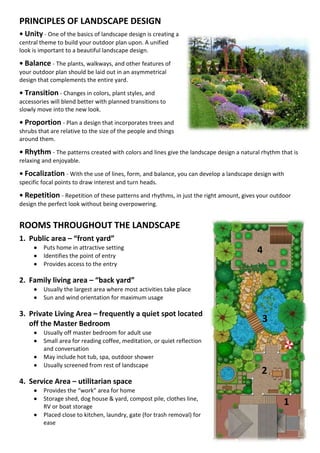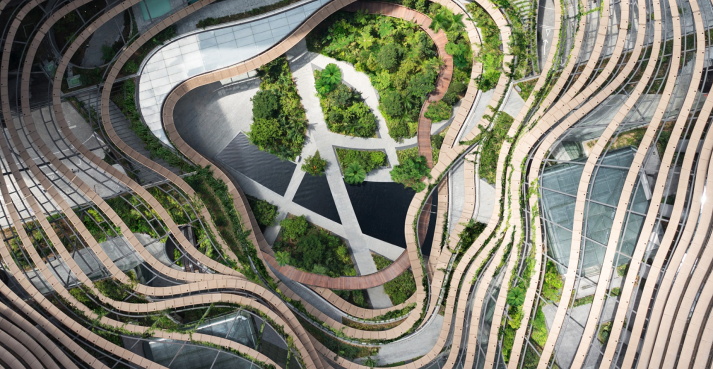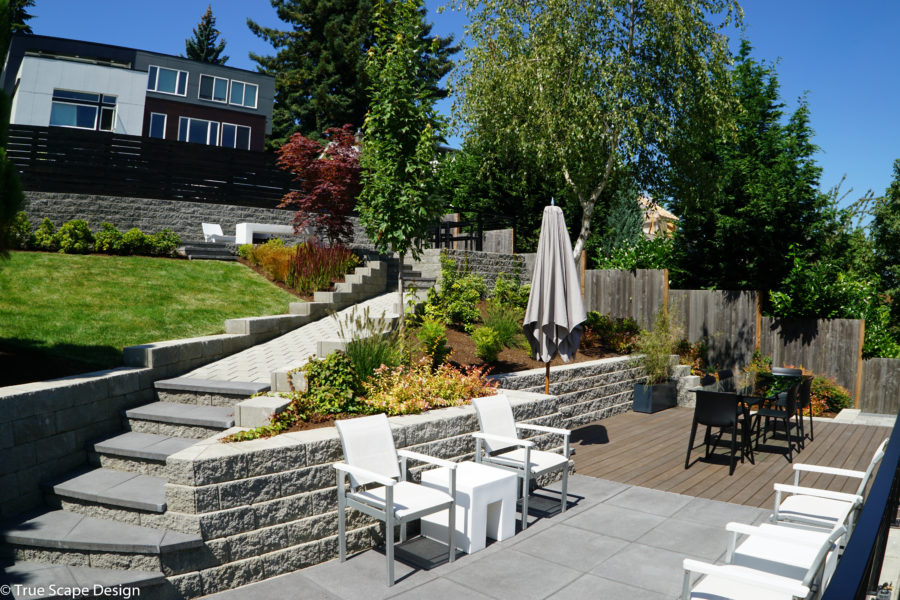The Ultimate Guide To Landscape Design
The Ultimate Guide To Landscape Design
Blog Article
The Only Guide to Landscape Design
Table of ContentsA Biased View of Landscape DesignSome Known Facts About Landscape Design.What Does Landscape Design Do?Landscape Design for Dummies
When developing a property landscape, one of the most crucial step is to put an intend on paper. Establishing a master plan will certainly conserve you time and cash and is extra most likely to result in an effective design. Landscape Design. A plan of attack is created via the 'style process': a step-by-step method that takes into consideration the environmental conditions, your wishes, and the components and principles of designThe five actions of the design procedure consist of: 1) carrying out a site supply and analysis, 2) identifying your needs, 3) creating functional representations, 4) creating theoretical style strategies, and 5) attracting a last design strategy. The first 3 actions establish the visual, practical, and gardening needs for the design. The last two steps then use those demands to the production of the final landscape strategy.
This is an important step for both plant selection and placement and finding family activities and features. It is essential since the same environment conditions that affect the plantstemperature, moisture, rain, wind, and sunlightalso impact you, the customer. The following action is to make a checklist of your needs and desiresthis helps you determine how your lawn and landscape will be made use of.
The functional layout is then utilized to locate the activity areas on the site and from this representation a theoretical strategy is created - Landscape Design. The last action is a last layout that includes all the hardscape and growing information that are needed for setup. Throughout the design process there are ten vital things to take into consideration: for plant option and activity place by considering what you want and need to aid establish forms and arrange areas by marking task areas and relating to components for both the setting and the user by utilizing massing and layering techniques such as change areas and centerpieces in the products, the colors, and the surface structures for the growth and upkeep of plants by utilizing sustainable layout techniques A comprehensive inventory and evaluation of the site is vital to establish the environmental conditions for plant development and the most effective usage of the site
Landscape Design - An Overview
It is constantly best to make use of plants that will flourish in the existing dirt. Where plants grow well, keep in mind the soil problems and use plants with similar expanding needs.

Sun/shade patterns, the quantity and size of exposure to sunlight or shade (Number 1), create microclimates (often called microhabitats). Recording site problems and existing plants on a base map will certainly expose the place of microclimates in the yard. Plants normally come under a couple of of four microclimate categories-full sunlight, partial shade, shade, and deep shade.
Energies such as power lines, septic tanks, underground utilities and roofing system overhangs figure out plant location. Utilize a land surveyor's plat of your residential or commercial property for the limits and place of your home.
Top Guidelines Of Landscape Design
Figure out the time and money you are prepared to place right into preserving the plants and hardscape-be reasonable regarding your objectives and ability. Suggested use locations. Credit Rating: Gail Hansen, UF/IFAS There are several different landscape layout motifs- from straightforward to complex, yet it is practical to select one to direct your plant and product selection.

Decide useful content if you wish to open your yard, shut your lawn, or a little Click This Link of both, to these sights. To put it simply, do you want the yard to enclose the space around you and connect mostly to your home, or do you desire the yard to open sights and look exterior, connecting to the environments? This will certainly offer you a starting indicate consider a theme.
About Landscape Design

This is called "local color", which indicates it fits with the surroundings. There are both form motifs and style motifs. Every garden must have a kind style, yet not all yards have a style theme. Actually, numerous domestic gardens have no particular design other than to blend with your home by duplicating information from the architecture such as materials, shade, and type.
In a form theme the organization and shape of the spaces in the backyard is based either on the form of your home, the shape of the areas in between the residence and the residential property boundaries, or a preferred shape of the home owner. The form motif figures out the form and organization (the design) of the spaces and the web links in between them.

Report this page